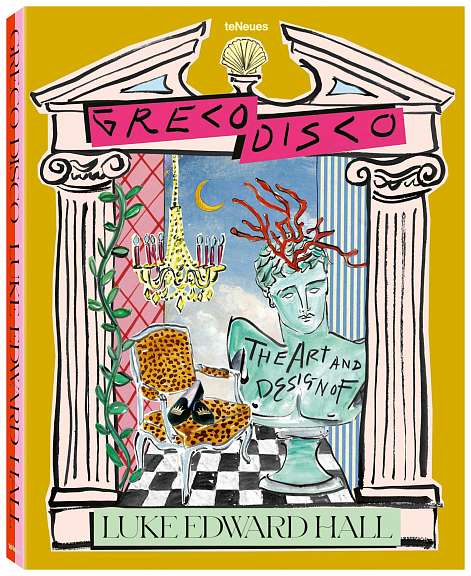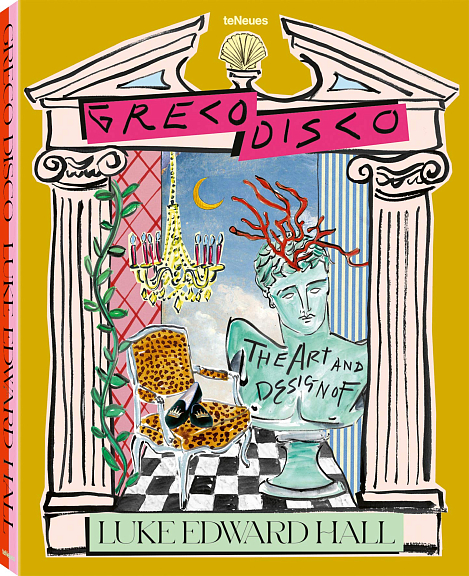-
Книги
- Нонфикшн
- Гуманитарные науки
- Деловая литература
- Естественные / Точные науки
- Книгоиздание
- Лайфстайл
- Словари / Энциклопедии
- Художественная литература
- Детектив
- Драматургия
- Классическая проза
- Мифология. Эпос
- Поэзия
- Собрания сочинений
- Современная художественная проза
- Фантастика. Фэнтези
- Биографии / Мемуары
- Графические романы / Комиксы
- Детские книги
- Воспитание. Педагогика
- Детский досуг
- О детских книгах
- Познавательная литература
- Художественная литература для детей
- Журналы / Зины
- Архитектурные
- Гуманитарные
- Журналы о моде
- Зарубежная периодика
- Искусство / Фотография
- Кино / Театр
- Лайфстайл
- Книги «Подписных изданий»
- Книги на иностранных языках
- Английский язык
- Испанский язык
- Итальянский язык
- Книги на иностранных языках для детей
- Немецкий язык
- Финский язык
- Французский язык
- Шведский язык
- Книги о кино
- Книги о музыке
- Книги о средневековье
- Книги о театре
- Книги о фотографии
- Книги об искусстве / Книги об архитектуре
- Альбомы по искусству
- Архитектура
- Декоративно-прикладное искусство
- Живопись
- Искусствоведение
- Орнаменты
- Прочее
- Танец
- Татуировка
- Творческое развитие
- Книги по философии
- Кулинарные книги
- Николай Солодников рекомендует
- Предзаказ
- Про дизайн / Про моду
- Путеводители / Книги о путешествиях
- Канцелярские товары
-
Подарки
- Брошки и значки
- Гирлянды
- Закладки
- Игры
- Календари
- Наклейки
- Наши сувениры
- Открытки
- Всякие-разные
- Наборы открыток
- Поздравления
- Про любовь и другие хорошие чувства
- С писателями и поэтами
- С цветами, овощами и фруктами
- С цитатами и другими фразами
- Подарочные сертификаты
- Постеры
- Прочее
- Сумки и шоперы
- Упаковка
- Подарочные сертификаты
Адрес магазина: Санкт-Петербург, Литейный пр., 57
Greco Disco: The Art & Design of Luke Edward Hall
| Автор | |
|---|---|
| Издательство | teNeues |
| Год издания | 2019 |
| Переплет | Твёрдый |
| Страниц | 224 |
| Формат | 260x329 мм |
| Язык | Английский |
| ISBN | 978-3-96171196-3 |
| Артикул | 1127315 |
Artist and designer Luke Edward Hall, based in London, has taken the design world by storm with his playful, nostalgic, charming, and sophisticated interiors, fabrics, ceramics, furniture, stationery, prints, drawings, and paintings. With a strong belief that his artwork, decor, and interior design convey happiness and optimism; whimsical and romantic themes and a bright colour palette are purposeful hallmarks of the wunderkind's aesthetic. Before the age of 30, Luke has already collaborated with some of the world's most prestigious creative brands and garnered acclaim from The New York Times, Vogue, and many of the most influential arts, design, and fashion publications. teNeues is proud to debut the exciting, beautiful, and exuberant first monograph of the brilliant Luke Edward Hall. After graduating from the esteemed Central Saint Martins, Luke Edward Hall began his career in interior design before establishing his own studio in 2015, and has since worked across a broad range of art and design commissions and interior design projects. He has expanded his portfolio to design collections of housewares, table linens, ceramics, stationery, embroidered slippers, clothing, and jewellery, and more. Burberry, Liberty London, Svenskt Tenn, Rowing Blazers, Christie's, and the Royal Academy of London are among his notable clientele. Luke has exhibited his artwork in London and Stockholm and contributed art pieces and his writings to such lauded culture magazines as Cabana, House & Garden, and Pleasure Garden. He is currently a regular columnist for the House & Home section of the Financial Times. www.lukeedwardhall.com Incl. 3 Special Features: FOLDOUT (pages 66-71) A 2-sided, 6 paneled-foldout (3 panels of imagery on each side; artwork by Luke Edward Hall) SKETCHBOOK insert (stapled into spread on pages 118-119) A mini-booklet (12 pages, 12 x 16 cm), inserted within the Layout of the book, showing preliminary sketches by Luke Edward Hall for his design projects. DIE-CUT (pages 216-219) A picture frame shape that is cut out of the page, revealing an illustrated portrait of a man and a woman on either side of the die-cut picture frame shape.
Подписка на рассылку
Раз в месяц будем присылать вам обзоры книг, промокоды и всякие-разные новости




